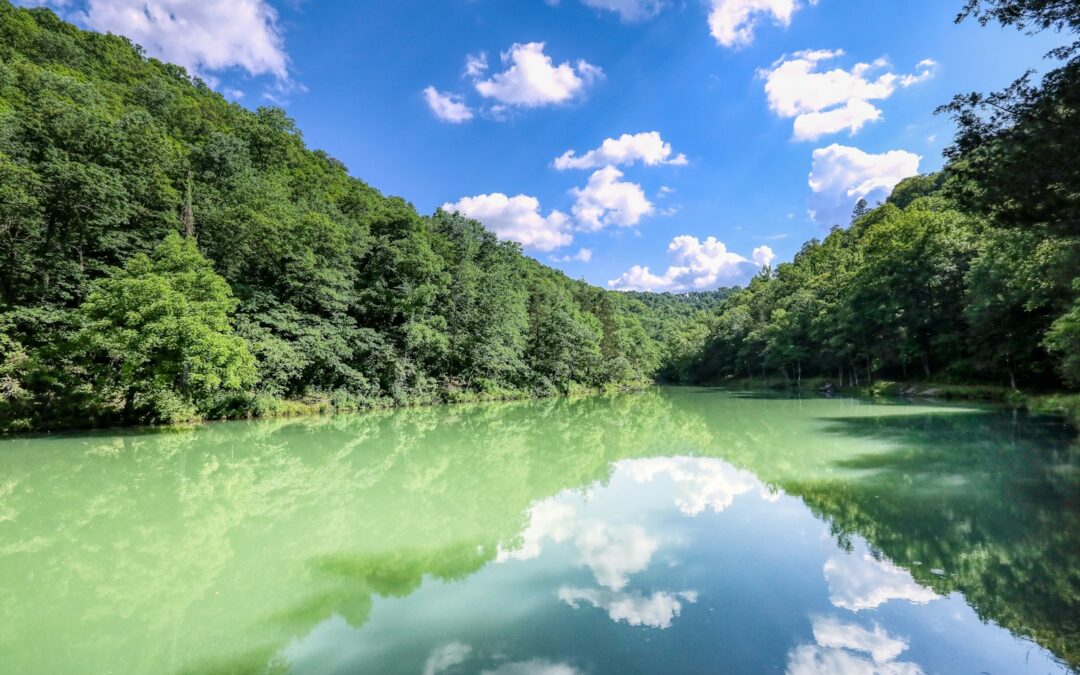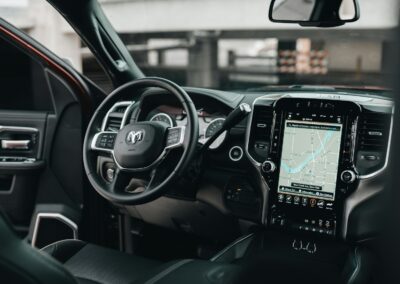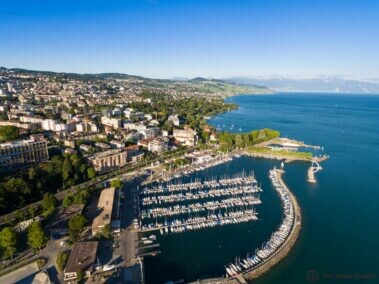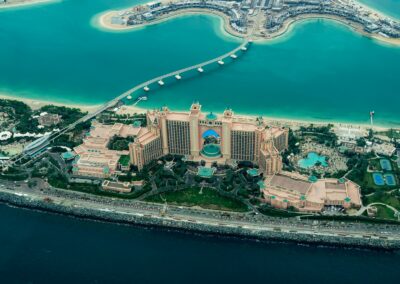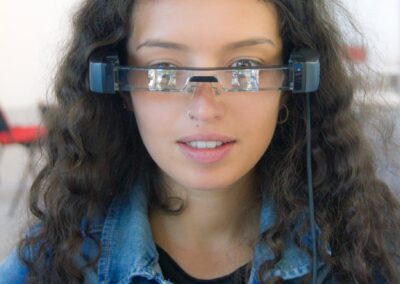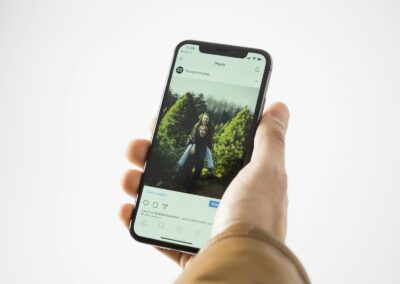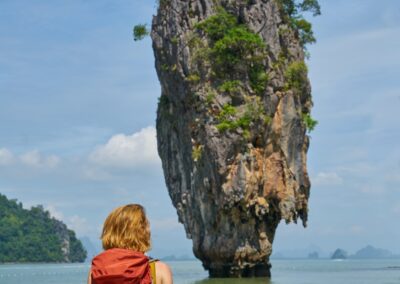Integrating Advanced Features for an Enhanced Tourist Experience
Immersive Augmented Reality Experiences
AR Applications for Tourism to be successful, it must offer features that enhance the tourist experience in a seamless and engaging manner. One of the key features is the integration of immersive AR experiences that allow users to explore destinations in a new light.
Immersive AR experiences can include interactive 3D models of historical landmarks, virtual tours of cultural sites, and AR-driven storytelling. For example, tourists visiting Riyadh can use an AR app to see a historical site as it appeared in the past, overlaying the current view with historical images and information. This not only enriches the visitor’s understanding but also makes the visit more engaging.
Furthermore, implementing geolocation-based AR features can guide tourists through a city like Dubai, providing real-time information about nearby attractions, restaurants, and events. By leveraging GPS technology, AR apps can offer personalized recommendations based on the user’s location, ensuring a tailored and relevant experience. This feature enhances the usability and practicality of the app, making it an indispensable tool for travelers.
Interactive and Informative Content
Successful AR tourism applications must prioritize content that is both interactive and informative. This involves providing detailed information about tourist attractions, including historical facts, cultural significance, and practical details such as opening hours and ticket prices. AR technology can display this information in an engaging way, such as through interactive maps and virtual guides.
Interactive content can also include gamified elements, such as scavenger hunts or AR-based challenges that encourage tourists to explore different parts of a city. For instance, an AR app could guide users through a cultural trail in Dubai, rewarding them with virtual badges or discounts at local businesses upon completion. This not only makes the exploration more fun but also drives engagement and repeat usage.
Additionally, incorporating multimedia elements like audio guides, videos, and animations can make the content more dynamic and engaging. These features cater to different learning styles and preferences, ensuring that the app appeals to a broader audience. For example, tourists visiting cultural sites in Saudi Arabia can use AR to watch reenactments of historical events or listen to stories narrated by virtual guides, making the experience more memorable and impactful.
Seamless Integration and User-Friendly Design
For an AR tourism application to be widely adopted, it must offer a seamless integration with existing digital infrastructure and be designed with user-friendliness in mind. This includes ensuring compatibility with various devices and operating systems, as well as providing a smooth and intuitive user interface.
User-friendly design involves creating a clean and straightforward navigation system that allows users to access information and features effortlessly. This can include a well-organized menu, clear instructions, and intuitive gestures for interacting with AR content. Additionally, offering multilingual support is crucial for catering to international tourists, making the app accessible to a global audience.
Moreover, seamless integration with other travel services can significantly enhance the app’s functionality. This can include integration with booking platforms, transportation services, and social media. For example, an AR app could allow users to book tickets to attractions directly through the app or share their AR-enhanced photos and experiences on social media. This not only adds convenience for the user but also increases the app’s visibility and user engagement.
Effective Implementation Strategies for AR Tourism Applications
Collaborating with Local Tourism Authorities and Businesses
One of the most effective strategies for implementing AR tourism applications is to collaborate with local tourism authorities and businesses. These partnerships can provide valuable insights and resources, ensuring that the AR content is accurate, relevant, and engaging. By working closely with local stakeholders, developers can create AR experiences that truly reflect the cultural and historical significance of a destination.
In regions like Saudi Arabia and the UAE, collaboration with tourism boards can help promote the app and attract a larger user base. Tourism authorities can provide access to exclusive content, historical archives, and promotional channels, enhancing the app’s credibility and reach. Additionally, partnering with local businesses such as hotels, restaurants, and tour operators can offer users exclusive deals and discounts, adding further value to the app.
Utilizing Advanced Technologies and Continuous Improvement
To ensure the success of AR tourism applications, developers must leverage advanced technologies and commit to continuous improvement. This includes utilizing the latest AR development platforms, such as ARKit and ARCore, which offer robust tools for creating high-quality AR experiences. By staying up-to-date with technological advancements, developers can provide users with cutting-edge features and functionalities.
Continuous improvement involves regularly updating the app with new content, features, and enhancements based on user feedback and emerging trends. This iterative approach ensures that the app remains relevant and engaging, fostering long-term user loyalty. For example, developers can introduce seasonal content, such as AR-guided holiday tours or special event features, to keep the app fresh and exciting.
Additionally, incorporating data analytics can provide valuable insights into user behavior and preferences, allowing developers to make data-driven decisions for future updates. By analyzing user interactions, developers can identify popular features, potential pain points, and areas for improvement, ensuring that the app continually evolves to meet user needs.
Marketing and Promoting AR Tourism Applications
Effective marketing and promotion are crucial for the success of AR tourism applications. A well-planned marketing strategy can help attract users, generate interest, and drive downloads. This can include leveraging digital marketing channels such as social media, search engine optimization (SEO), and content marketing.
Social media platforms like Instagram, Facebook, and Twitter are particularly effective for promoting AR tourism apps, as they allow for visually engaging content and direct interaction with potential users. Developers can create promotional videos, share user-generated content, and run targeted ad campaigns to reach a wider audience. Collaborating with travel influencers and bloggers can also help increase the app’s visibility and credibility.
SEO is another critical component of the marketing strategy. By optimizing the app’s website and content for relevant keywords, developers can improve their search engine rankings and attract organic traffic. For example, using keywords like “AR tourism apps in Saudi Arabia” or “best AR travel guides in Dubai” can help potential users discover the app more easily.
Content marketing involves creating valuable and informative content related to the app’s features and benefits. This can include blog posts, articles, and guides that highlight the app’s unique selling points and provide useful travel tips. By establishing the app as a valuable resource for travelers, developers can attract and retain a loyal user base.
Conclusion: Building Successful AR Tourism Applications
The development and implementation of successful AR applications for tourism require a comprehensive approach that integrates advanced features, user-friendly design, and effective marketing strategies. By focusing on immersive experiences, interactive content, and seamless integration, developers can create engaging and valuable tools for travelers.
Collaboration with local stakeholders, continuous improvement, and strategic marketing are essential for maximizing the app’s reach and impact. In dynamic and culturally rich regions like Saudi Arabia, the UAE, Riyadh, and Dubai, these strategies are particularly relevant for attracting tech-savvy tourists and enhancing their travel experiences.
Ultimately, the key to success lies in understanding and meeting the needs of modern travelers, providing them with innovative and enriching AR experiences that enhance their journeys and create lasting memories.
—
#ARApplicationsForTourism, #SuccessfulARTourismApps, #KeyFeaturesOfARTourismApps, #ImplementingARInTourism, #ARTechnologyForTravel, #EnhancingTourismWithAR, #ARAppDevelopmentForTourism, #SaudiArabiaARTourism, #UAEARTourism, #ARTravelGuides

